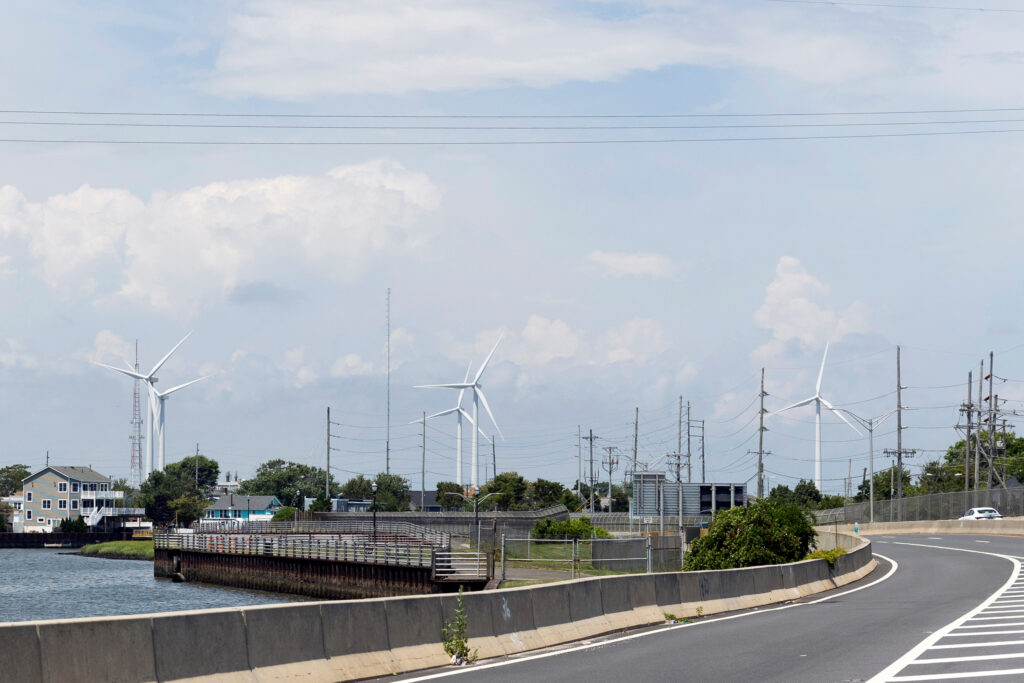The latest anomaly in the climate system that can’t be fully explained by researchers is a record annual jump in the global mean concentration of carbon dioxide in the atmosphere measured in 2024.
The concentration, measured in parts per million, has been increasing rapidly since human civilizations started burning coal and oil in the mid-1800s from the pre-industrial level of 280 ppm.
In recent decades, the increase has often been in annual increments of 1 to 2 ppm. But last year, the increase measured by the National Oceanic and Atmospheric Administration’s Global Monitoring Laboratory was 3.75 ppm, according to the lab’s early April update of atmospheric greenhouse gas concentrations.
That brings the annual mean global concentration close to 430 ppm, about 40 percent more than the pre-industrial level, and enough to heat the planet by about 2.7 degrees Fahrenheit (1.5 degrees Celsius). Climate researchers have noted that the continuing increase of global CO2 emissions means the world will probably not be able to reach the Paris Agreement target of limiting warming to 2.7 degrees Fahrenheit above the pre-industrial level.
We’re hiring!
Please take a look at the new openings in our newsroom.
See jobs
“It’s definitely worrying to see such a large jump in 2024,” said Berkeley Earth climate researcher Zeke Hausfather. “While it’s not surprising to set new records given global emissions have yet to peak, and there are generally higher ppm increases in El Niño years, 2024 was still anomalous for just how large it was.”
El Niño refers to the warm phase of a tropical Pacific Ocean cycle that’s formally called the El Niño Southern Oscillation. During other recent El Niño phases, like in 1998 and 2016, the annual CO2 increase was about 3 ppm, Hausfather said.
“Because we know the magnitude of emissions and the ocean sink does not vary that much year to year, this has to reflect a weakening of the land sink,” he said, referring to the amount of carbon absorbed by terrestrial ecosystems like forests and wetlands. Those ecosystems did still take up some carbon last year, he noted, but the land sink was the weakest since 1998, when it touched zero, and 1987, when it was a net emitter of CO2.
Even if the growth rate slows again in 2025, he said, “the worry is that this year’s jump might include [non-El Niño] factors like temperature responses from soils and vegetation that might persist or intensify as the Earth warms.”
The unprecedented increase of atmospheric CO2 is just one of several red lights flashing on the climate dashboard.

Others include the 2023-2024 spike of the global average surface temperature, which has also not been fully explained, and the fact that Earth’s average temperature has stayed above a 2.7 degree Fahrenheit temperature target set by the Paris Agreement for 20 of the last 21 months. Additionally, the combined sea ice extent in both polar regions has dropped to record or near-record lows the last few years, which means Earth is losing some of its biggest heat shields.
In recent years, NOAA publicized the annual updates to the global greenhouse gas index with press releases and explanatory articles on its website, and the agency was set to do the same this year, said Tom Di Liberto, a former NOAA public affairs specialist who was fired by the Trump administration in late February along with hundreds of other NOAA staffers.
“That article was written, and then it was taken down by the current political communications leader of NOAA because it would not make the administration happy,” he said. “NOAA is likely to still be doing the work internally, but it’s very unlikely you will see stuff coming out of NOAA like you had in the past.”
NOAA did not provide answers to Inside Climate News’ questions about this year’s increase.
Climate scientist Michael Mann, director of the Center for Science, Sustainability & the Media at the University of Pennsylvania, said the CO2 spike may reflect the post-COVID emissions bounce as economies restarted after lockdowns, but he said the general expectation is that emissions will start to plateau this year, largely driven by decarbonization by China and other countries.
“I’ve seen the claim made that decreased uptake by natural sinks and wildfire emissions might have played a role,” he said. “But my view is that this may be a misinterpretation of the fleeting impacts of extended, major El Niño events like 2023-2024.”
James Hansen, an adjunct professor at Columbia University’s Earth Institute and director of the Program on Climate Science, Awareness and Solutions, said the 2024 CO2 increase is not surprising, given continued record-high emissions from fossil fuels, as well as the record-warm oceans.
“Similar increases have occurred with lesser emissions, but stronger El Niños,” he said. “It’s not all gloom and doom. The airborne fraction of emissions has actually trended downward over the past several decades, so once we begin to reduce emissions, we should be able to get the growth rate of CO2 to decline.”
About This Story
Perhaps you noticed: This story, like all the news we publish, is free to read. That’s because Inside Climate News is a 501c3 nonprofit organization. We do not charge a subscription fee, lock our news behind a paywall, or clutter our website with ads. We make our news on climate and the environment freely available to you and anyone who wants it.
That’s not all. We also share our news for free with scores of other media organizations around the country. Many of them can’t afford to do environmental journalism of their own. We’ve built bureaus from coast to coast to report local stories, collaborate with local newsrooms and co-publish articles so that this vital work is shared as widely as possible.
Two of us launched ICN in 2007. Six years later we earned a Pulitzer Prize for National Reporting, and now we run the oldest and largest dedicated climate newsroom in the nation. We tell the story in all its complexity. We hold polluters accountable. We expose environmental injustice. We debunk misinformation. We scrutinize solutions and inspire action.
Donations from readers like you fund every aspect of what we do. If you don’t already, will you support our ongoing work, our reporting on the biggest crisis facing our planet, and help us reach even more readers in more places?
Please take a moment to make a tax-deductible donation. Every one of them makes a difference.
Thank you,


















